Sarah L. Johnson's Blog, page 105
April 21, 2014
Book review: No Great Mischief, by Alistair MacLeod
Having just gotten word about the death yesterday of acclaimed Canadian writer Alistair MacLeod, I thought I'd use this space today to celebrate his work. Although he had written many short stories, No Great Mischief was his only novel, and it was a significant one, winning the International IMPAC Dublin Literary Award in 2001. I'd highly recommend it if you haven't already read it. Below is the review I wrote back when it was first published. For more information on MacLeod and his life, see the obituaries in CTV News and Halifax's Chronicle-Herald.
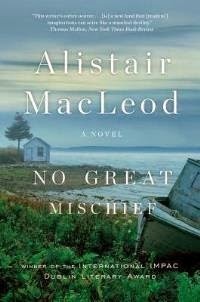 On Cape Breton Island, the Gaelic stronghold of Nova Scotia — a land of windswept crags and rocky shores — memories of years long past still reside in the hearts and minds of the people. Over two hundred years after Culloden, families of Scots descent still reminisce about the brave exploits of their handsome Bonnie Prince Charlie, and still lament the fact that the French did not come to his aid.
On Cape Breton Island, the Gaelic stronghold of Nova Scotia — a land of windswept crags and rocky shores — memories of years long past still reside in the hearts and minds of the people. Over two hundred years after Culloden, families of Scots descent still reminisce about the brave exploits of their handsome Bonnie Prince Charlie, and still lament the fact that the French did not come to his aid.
In 1779, Calum MacDonald — called Calum Ruadh for his red hair — left the Scottish Highlands with his family, bound for a better life in Nova Scotia. At the end of the twentieth century, his descendant Alexander MacDonald works as an orthodontist in Ontario, though his heart has never left his homeland of Cape Breton. While on a visit to his alcoholic eldest brother, living in squalor in a Toronto apartment, his thoughts turn back to his early days growing up with his grandparents and twin sister on the island. His story is told in flashbacks, including flashbacks nested within each other at multiple levels. In a lesser writer’s hands, this might cause one to lose perspective, but here the reader’s attention is held throughout.
Alexander’s tale twines through various happenings of importance: the early deaths of his parents; the unusual friendship of his two grandfathers, one relaxed and jovial, the other careful and contained; and the wild, violent summer spent with his three elder brothers as miners deep within the Canadian Shield. Wherever he or his siblings venture, they’re identified both to themselves and to outsiders as members of the clann Chalum Ruaidh, the “clan of the red Calum.” In this large extended family where relationships matter more than names, distant relatives in Scotland greet their Canadian kin with open arms, grandparents use Gaelic to recount tales of the old country, and even the family dogs are loyal unto death.
Lyrical and moving, No Great Mischief may not be historical fiction in its usual definition, but one would be hard-pressed to find a novel with a stronger sense of history. A Canadian bestseller of local interest yet truly international appeal, this novel is a highly recommended exploration of the pain of exile, the strength of family, and the inescapable nature of the past.
No Great Mischief was published by WW Norton in 2000 and has been reprinted many times since then. The photo above comes from the 2011 edition. This review first appeared in the Historical Novels Review in August 2000.
 On Cape Breton Island, the Gaelic stronghold of Nova Scotia — a land of windswept crags and rocky shores — memories of years long past still reside in the hearts and minds of the people. Over two hundred years after Culloden, families of Scots descent still reminisce about the brave exploits of their handsome Bonnie Prince Charlie, and still lament the fact that the French did not come to his aid.
On Cape Breton Island, the Gaelic stronghold of Nova Scotia — a land of windswept crags and rocky shores — memories of years long past still reside in the hearts and minds of the people. Over two hundred years after Culloden, families of Scots descent still reminisce about the brave exploits of their handsome Bonnie Prince Charlie, and still lament the fact that the French did not come to his aid. In 1779, Calum MacDonald — called Calum Ruadh for his red hair — left the Scottish Highlands with his family, bound for a better life in Nova Scotia. At the end of the twentieth century, his descendant Alexander MacDonald works as an orthodontist in Ontario, though his heart has never left his homeland of Cape Breton. While on a visit to his alcoholic eldest brother, living in squalor in a Toronto apartment, his thoughts turn back to his early days growing up with his grandparents and twin sister on the island. His story is told in flashbacks, including flashbacks nested within each other at multiple levels. In a lesser writer’s hands, this might cause one to lose perspective, but here the reader’s attention is held throughout.
Alexander’s tale twines through various happenings of importance: the early deaths of his parents; the unusual friendship of his two grandfathers, one relaxed and jovial, the other careful and contained; and the wild, violent summer spent with his three elder brothers as miners deep within the Canadian Shield. Wherever he or his siblings venture, they’re identified both to themselves and to outsiders as members of the clann Chalum Ruaidh, the “clan of the red Calum.” In this large extended family where relationships matter more than names, distant relatives in Scotland greet their Canadian kin with open arms, grandparents use Gaelic to recount tales of the old country, and even the family dogs are loyal unto death.
Lyrical and moving, No Great Mischief may not be historical fiction in its usual definition, but one would be hard-pressed to find a novel with a stronger sense of history. A Canadian bestseller of local interest yet truly international appeal, this novel is a highly recommended exploration of the pain of exile, the strength of family, and the inescapable nature of the past.
No Great Mischief was published by WW Norton in 2000 and has been reprinted many times since then. The photo above comes from the 2011 edition. This review first appeared in the Historical Novels Review in August 2000.
Published on April 21, 2014 07:00
April 18, 2014
My summer and fall historical fiction picks, part 1
A heads-up that this will be a very self-centered post! Here are ten books, published between now and this fall, that are on my personal wishlist. I had a hard time limiting this down, so I'll be posting a second set of ten later on. While nearly all of them are written by women, they offer much more diversity in terms of historical milieu.
Thanks to the generosity of the publishers and authors, copies of half of these titles are either here or on the way, meaning that reviews will be posted in due course.
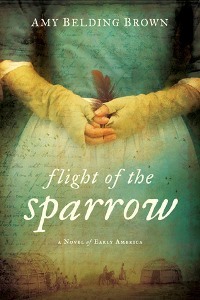
A novel about a real-life woman from early American history? I'm there. I'm already hearing excellent things about this story recounting Mary Rowlandson's capture by Indians in 1676 Massachusetts and her subsequent difficulties returning to her old life. NAL, July. [see on Goodreads]
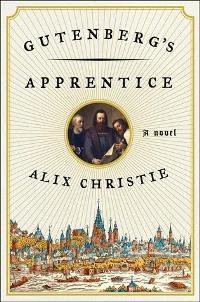
A brilliant evocation of late medieval Germany. I was astonished to discover that this story about the creation of the Gutenberg Bible in 15th-century Mainz was based on real characters and events – and wondered why it hadn't been told in fiction before. (This is the only one of the ten I've read so far.) Harper, September. [see on Goodreads]
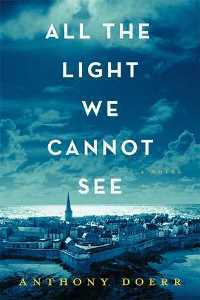
The paths of a blind French girl and a German boy collide and intertwine in occupied Paris. I've been hearing so many superlatives about the author's compelling, generous storytelling that I have to add it to the list. Scribner, May. [see on Goodreads]
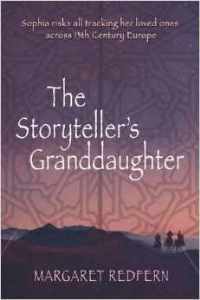
Because I loved the author's Flint (reviewed here in 2009), I was excited to see she had a new novel in the works. In this literary adventure, a young woman takes to the Spice Road in the 13th century to search for her storyteller grandfather. Honno Welsh Women's Press, August. [not on Goodreads yet]
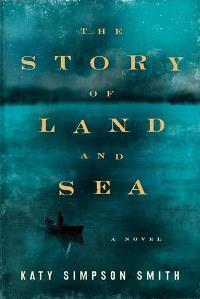
A debut novel that follows several generations of a family living in coastal North Carolina around the time of the Revolution. It's an unusual perspective on a familiar war, and since I already gravitate towards literary sagas, this looks right up my alley. Harper, August. [see on Goodreads]
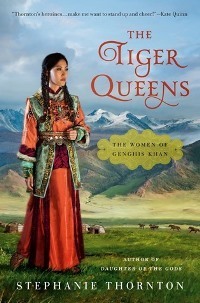
Fiction about the women in Genghis Khan's life; set in late 12th-century Mongolia. Kudos to the author and publisher for continuing to take on the stories of important women from non-Western history. NAL, November. [See on Goodreads]
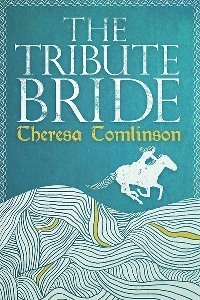
One of the author's specialties is Anglo-Saxon England, and here she interprets the life of Acha of Deira, a young woman married off into a harsh, unfamiliar land in the early 7th century. Since I'd enjoyed her previous A Swarming of Bees , a mystery set at the time of the Synod of Whitby, The Tribute Bride was a natural choice for the TBR. Acorn Digital Press, April. [see on Goodreads]
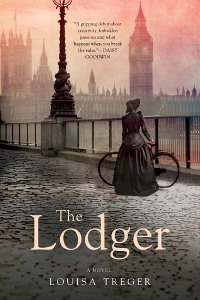
The life of Dorothy Richardson, lover of H.G. Wells, and an important 20th-century British writer in her own right. What a breathtaking cover! Not only do I want to read more about this unconventional woman's life, I want to hang the jacket art on my wall. Thomas Dunne, October. [see on Goodreads]
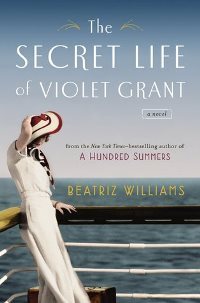
A recent Bryn Mawr grad gets drawn into learning more about the mysterious aunt whose existence was erased from their family history. Romance, secrets, and a setting that sweeps from WWI-era Germany to NYC in the Swinging Sixties; it looks like the perfect read for summer vacation. Putnam, May. [see on Goodreads]
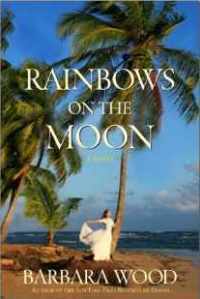
You can always count on Barbara Wood for skillful storytelling, adventurous women, and out-of-the-ordinary settings. Her latest takes place in Honolulu in the early 19th century and focuses on the female half of a young missionary couple. Turner, September. [see on Goodreads]
Thanks to the generosity of the publishers and authors, copies of half of these titles are either here or on the way, meaning that reviews will be posted in due course.

A novel about a real-life woman from early American history? I'm there. I'm already hearing excellent things about this story recounting Mary Rowlandson's capture by Indians in 1676 Massachusetts and her subsequent difficulties returning to her old life. NAL, July. [see on Goodreads]

A brilliant evocation of late medieval Germany. I was astonished to discover that this story about the creation of the Gutenberg Bible in 15th-century Mainz was based on real characters and events – and wondered why it hadn't been told in fiction before. (This is the only one of the ten I've read so far.) Harper, September. [see on Goodreads]

The paths of a blind French girl and a German boy collide and intertwine in occupied Paris. I've been hearing so many superlatives about the author's compelling, generous storytelling that I have to add it to the list. Scribner, May. [see on Goodreads]

Because I loved the author's Flint (reviewed here in 2009), I was excited to see she had a new novel in the works. In this literary adventure, a young woman takes to the Spice Road in the 13th century to search for her storyteller grandfather. Honno Welsh Women's Press, August. [not on Goodreads yet]

A debut novel that follows several generations of a family living in coastal North Carolina around the time of the Revolution. It's an unusual perspective on a familiar war, and since I already gravitate towards literary sagas, this looks right up my alley. Harper, August. [see on Goodreads]

Fiction about the women in Genghis Khan's life; set in late 12th-century Mongolia. Kudos to the author and publisher for continuing to take on the stories of important women from non-Western history. NAL, November. [See on Goodreads]

One of the author's specialties is Anglo-Saxon England, and here she interprets the life of Acha of Deira, a young woman married off into a harsh, unfamiliar land in the early 7th century. Since I'd enjoyed her previous A Swarming of Bees , a mystery set at the time of the Synod of Whitby, The Tribute Bride was a natural choice for the TBR. Acorn Digital Press, April. [see on Goodreads]

The life of Dorothy Richardson, lover of H.G. Wells, and an important 20th-century British writer in her own right. What a breathtaking cover! Not only do I want to read more about this unconventional woman's life, I want to hang the jacket art on my wall. Thomas Dunne, October. [see on Goodreads]

A recent Bryn Mawr grad gets drawn into learning more about the mysterious aunt whose existence was erased from their family history. Romance, secrets, and a setting that sweeps from WWI-era Germany to NYC in the Swinging Sixties; it looks like the perfect read for summer vacation. Putnam, May. [see on Goodreads]

You can always count on Barbara Wood for skillful storytelling, adventurous women, and out-of-the-ordinary settings. Her latest takes place in Honolulu in the early 19th century and focuses on the female half of a young missionary couple. Turner, September. [see on Goodreads]
Published on April 18, 2014 17:00
April 15, 2014
Grist by Linda Little, a story of women's resilence in rural Nova Scotia
Even sensible girls can be taken in by unexpected attention. Linda Little's resilient heroine, a schoolteacher in rural Nova Scotia in 1875, discovers this to her regret when her landlord’s taciturn, socially awkward brother begins paying court to her. Describing herself up front as a “large, square-jawed girl – graceless but strong,” Penelope McCabe has a warm, honest voice that endears readers to her. How she deals with a situation that becomes progressively more unhappy gains her both sympathy and admiration.
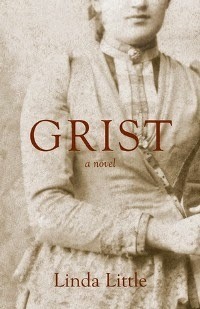 Ewan MacLaughlin’s letters to Penelope are hardly the wooing sort – full of practicalities and odd questions, they’re the opposite of romantic. It's apparent from the outset that something's off with him. Maybe he's just shy? Penelope is curious about his quirky approach, but part of her is pleased regardless. Understandably, she longs for marriage and a family, just like any other hopeful young woman of her time would.
Ewan MacLaughlin’s letters to Penelope are hardly the wooing sort – full of practicalities and odd questions, they’re the opposite of romantic. It's apparent from the outset that something's off with him. Maybe he's just shy? Penelope is curious about his quirky approach, but part of her is pleased regardless. Understandably, she longs for marriage and a family, just like any other hopeful young woman of her time would.
Ewan owns and runs a mill “way up the Gunn Brook,” so he has the means to provide for a wife. After he and Penelope wed, they board his wagon and ride three hours from town to Ewan’s newly constructed home, which she delights in exploring. Her optimism turns to puzzlement, though, once she gets a better grasp of Ewan’s true nature.
Ill-mannered and controlling, his personality grounded in a warped form of piety, Ewan makes it clear he hates conversation and resents her socializing with anyone. Mills are Ewan’s life, and he’s so talented at building and improving them that his skills are in high demand from all over the province. Forced against her will to run their mill alone, Penelope finds her happiness where she can: in the stark beauty of the landscape, which is beautifully evoked; in her friendship with neighboring farmers; and in unanticipated stolen moments. Ewan takes his revenge for her perceived weaknesses, and it's left to Penelope to protect her family from its effects.
Over the course of this multi-generational story, several chapters draw readers into Ewan’s viewpoint – told in the more distant third person, as feels appropriate – and allow insight into his mindset and why the straight, predictable art of engineering served as a peaceful escape from his rough childhood. Given how he treats Penelope, these sections can be a hard sell in eliciting significant empathy for Ewan, but they succeed in providing background for why he acts as he does. Elegantly written, with lovely descriptions of mill work and the transient joys Penelope finds in family life, Grist is a bleak and bittersweet ode to historical women’s strength and endurance.
Grist was published in 2014 (trade pb, $20.95, 234pp) by Roseway, the literary imprint of Nova Scotia-based Fernwood Publishing, which "aims to publish literary work that is rooted in and relevant to struggles for social justice." Thanks to the author and Historical Fiction Virtual Book Tours for the review copy.
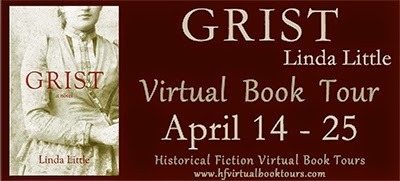
 Ewan MacLaughlin’s letters to Penelope are hardly the wooing sort – full of practicalities and odd questions, they’re the opposite of romantic. It's apparent from the outset that something's off with him. Maybe he's just shy? Penelope is curious about his quirky approach, but part of her is pleased regardless. Understandably, she longs for marriage and a family, just like any other hopeful young woman of her time would.
Ewan MacLaughlin’s letters to Penelope are hardly the wooing sort – full of practicalities and odd questions, they’re the opposite of romantic. It's apparent from the outset that something's off with him. Maybe he's just shy? Penelope is curious about his quirky approach, but part of her is pleased regardless. Understandably, she longs for marriage and a family, just like any other hopeful young woman of her time would.Ewan owns and runs a mill “way up the Gunn Brook,” so he has the means to provide for a wife. After he and Penelope wed, they board his wagon and ride three hours from town to Ewan’s newly constructed home, which she delights in exploring. Her optimism turns to puzzlement, though, once she gets a better grasp of Ewan’s true nature.
Ill-mannered and controlling, his personality grounded in a warped form of piety, Ewan makes it clear he hates conversation and resents her socializing with anyone. Mills are Ewan’s life, and he’s so talented at building and improving them that his skills are in high demand from all over the province. Forced against her will to run their mill alone, Penelope finds her happiness where she can: in the stark beauty of the landscape, which is beautifully evoked; in her friendship with neighboring farmers; and in unanticipated stolen moments. Ewan takes his revenge for her perceived weaknesses, and it's left to Penelope to protect her family from its effects.
Over the course of this multi-generational story, several chapters draw readers into Ewan’s viewpoint – told in the more distant third person, as feels appropriate – and allow insight into his mindset and why the straight, predictable art of engineering served as a peaceful escape from his rough childhood. Given how he treats Penelope, these sections can be a hard sell in eliciting significant empathy for Ewan, but they succeed in providing background for why he acts as he does. Elegantly written, with lovely descriptions of mill work and the transient joys Penelope finds in family life, Grist is a bleak and bittersweet ode to historical women’s strength and endurance.
Grist was published in 2014 (trade pb, $20.95, 234pp) by Roseway, the literary imprint of Nova Scotia-based Fernwood Publishing, which "aims to publish literary work that is rooted in and relevant to struggles for social justice." Thanks to the author and Historical Fiction Virtual Book Tours for the review copy.

Published on April 15, 2014 05:00
April 11, 2014
Book review: The Orenda, by Joseph Boyden
 A noteworthy literary achievement, Boyden’s mesmerizing third novel sits at the confluence of three civilizations in 17th-century Ontario. The narration alternates among Bird, a Wendat (Huron) warrior; Snow Falls, the young Iroquois captive he adopts after killing her family to avenge his wife and daughters; and Père Christophe, a thoughtfully intelligent, multilingual Jesuit missionary. Over some years, as the growing French presence in the New World upsets a fragile balance and threats from the Iroquois become urgent, the French and Wendat move toward alliance, which, tragically, increases the latter’s susceptibility to European diseases.
A noteworthy literary achievement, Boyden’s mesmerizing third novel sits at the confluence of three civilizations in 17th-century Ontario. The narration alternates among Bird, a Wendat (Huron) warrior; Snow Falls, the young Iroquois captive he adopts after killing her family to avenge his wife and daughters; and Père Christophe, a thoughtfully intelligent, multilingual Jesuit missionary. Over some years, as the growing French presence in the New World upsets a fragile balance and threats from the Iroquois become urgent, the French and Wendat move toward alliance, which, tragically, increases the latter’s susceptibility to European diseases.In this deeply researched work, Boyden captures his characters’ disparate beliefs, remaining impartial even as they pass judgment on the customs they find simultaneously fascinating and repellent in the others. The prose conveys a raw beauty in its depictions of trade journeys, daily life within longhouses, and spirituality; the Huron Feast of the Dead, for example, is presented as a majestic symphony of reverence. The scenes of ritual torture are difficult to read, and the novel offers many intense impressions of cross-cultural conflicts and differences, yet it is most affecting when evoking its protagonists’ shared humanity and the life force—the orenda—burning brightly within each of them.
The Orenda will be published by Knopf on May 13th (hb, $26.95). It was first published by Hamish Hamilton last September in Canada, where it became a national bestseller. Last month, it was chosen as the winner of the 2014 Canada Reads literary battle.
I wrote this starred review for Booklist's March 1st issue. The Orenda also made it to Booklist's top 10 in historical fiction for 2014 (which also includes two other picks of mine: Emma Donoghue's Frog Music and Henning Mankell's A Treacherous Paradise).
Published on April 11, 2014 05:27
April 9, 2014
Downton Abbey readalikes meet the university library
I recently had the opportunity to put up a display of Downton Abbey readalike books at the university library where I work. The exhibit was timed to begin just after Season 4 wrapped up – it ran during the month of March – so I figured I'd have an eager audience. Even so, I underestimated the huge demand there was for these books, and I found myself scrambling to meet it.
Library book displays are nothing new, so it seems silly in a way to dedicate a blog post to it. But I thought I might share my experience as a way of encouraging academic libraries in particular to try something similar. College students are avid readers, as are faculty and staff.
Also, I've heard from friends in the publishing industry that interest in country house sagas and the Edwardian era is starting to wane. This is hardly a scientific experiment, but if the success of this project is any indication, this isn't true as far as readers are concerned.
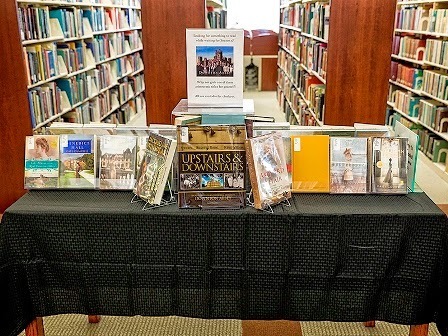
Here are pics of both sides. I started out with 16 titles purchased just for the display (ordered by my colleague Pam, who oversees our popular reading collections). They were mostly trade paperbacks, both fiction and nonfiction. Then I supplemented them with more titles we already had in our collections, for a total of 22 in all. I was fortunate to be given a visible spot on the library's main level, right near the circulation desk. At the top were two signs I had fun creating: "Looking for something to read while waiting for Season 5?" and "Reading Fit for a Dowager Countess."
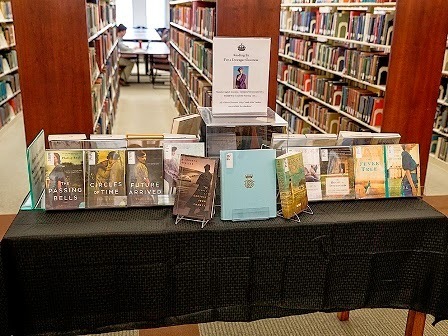
The display went up on Monday, March 3rd. By Tuesday afternoon, half of the titles had been checked out. By the end of the week, only six titles remained, and the exhibit was looking very picked over. So I pulled more relevant titles from our Read & Relax (paperback) and Bestsellers (hardcover) collections to fill up the display again, and anything that looked like it would remotely fit went in. (For example, Philippa Gregory's Fallen Skies; a couple by Jacqueline Winspear. We had many other WWI-era novels in our main stacks, but without covers, so I didn't include many of them. Books on display without covers tend to sit there.) I replenished it twice more, and took away some unused display stands so it didn't look quite so empty. Some returned items came back to the display. Still, by the end of March, only three books were left. It was impossible to keep it filled. Almost everything added was checked out immediately.
On April 1st, I created a MS Access report to look at the circulation (i.e., number of checkouts) of all 32 items that were on the display at some point. During the month, all but three titles had been checked out at least once, and many of them had been checked out twice.
I hope to revisit this display next winter, just before Season 5 starts... and next time, I'll be ready with even more books to include. My next project is a display on novels set in the 1960s, both historical fiction as well as fiction that was written back then and gives a good sense of the era. The library is organizing a large-scale exhibit and speaker series on the '60s for the fall, so this will be part of it. I don't know if that book display will be as popular as the Downton one was, but I'll be curious to see how it turns out.
Library book displays are nothing new, so it seems silly in a way to dedicate a blog post to it. But I thought I might share my experience as a way of encouraging academic libraries in particular to try something similar. College students are avid readers, as are faculty and staff.
Also, I've heard from friends in the publishing industry that interest in country house sagas and the Edwardian era is starting to wane. This is hardly a scientific experiment, but if the success of this project is any indication, this isn't true as far as readers are concerned.

Here are pics of both sides. I started out with 16 titles purchased just for the display (ordered by my colleague Pam, who oversees our popular reading collections). They were mostly trade paperbacks, both fiction and nonfiction. Then I supplemented them with more titles we already had in our collections, for a total of 22 in all. I was fortunate to be given a visible spot on the library's main level, right near the circulation desk. At the top were two signs I had fun creating: "Looking for something to read while waiting for Season 5?" and "Reading Fit for a Dowager Countess."

The display went up on Monday, March 3rd. By Tuesday afternoon, half of the titles had been checked out. By the end of the week, only six titles remained, and the exhibit was looking very picked over. So I pulled more relevant titles from our Read & Relax (paperback) and Bestsellers (hardcover) collections to fill up the display again, and anything that looked like it would remotely fit went in. (For example, Philippa Gregory's Fallen Skies; a couple by Jacqueline Winspear. We had many other WWI-era novels in our main stacks, but without covers, so I didn't include many of them. Books on display without covers tend to sit there.) I replenished it twice more, and took away some unused display stands so it didn't look quite so empty. Some returned items came back to the display. Still, by the end of March, only three books were left. It was impossible to keep it filled. Almost everything added was checked out immediately.
On April 1st, I created a MS Access report to look at the circulation (i.e., number of checkouts) of all 32 items that were on the display at some point. During the month, all but three titles had been checked out at least once, and many of them had been checked out twice.
I hope to revisit this display next winter, just before Season 5 starts... and next time, I'll be ready with even more books to include. My next project is a display on novels set in the 1960s, both historical fiction as well as fiction that was written back then and gives a good sense of the era. The library is organizing a large-scale exhibit and speaker series on the '60s for the fall, so this will be part of it. I don't know if that book display will be as popular as the Downton one was, but I'll be curious to see how it turns out.
Published on April 09, 2014 07:00
April 7, 2014
Book review: Wake, by Anna Hope
Wake is skillfully written from the outset, though the initial premise doesn’t feel especially groundbreaking: in post-WWI London, three ordinary women cope with their stagnant lives. Hettie partners single men at a Hammersmith dance hall to support her mother and shell-shocked brother, upper-class Evelyn works as a pension clerk while mourning her lover, and Ada can’t move past her soldier son’s death.
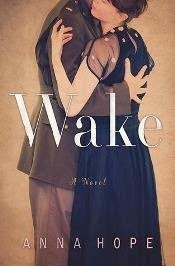 Hope then proceeds to color in their personal histories, revealing the distinctiveness of each character and situation over five days, during the lead-up to the unveiling of the Unknown Warrior’s tomb in Westminster Abbey. As their circumstances change and new people enter their lives, the women are spurred to action. Likewise, as these characters’ stories and others’ are intermixed, readers will be flipping pages to discover their tragic connection.
Hope then proceeds to color in their personal histories, revealing the distinctiveness of each character and situation over five days, during the lead-up to the unveiling of the Unknown Warrior’s tomb in Westminster Abbey. As their circumstances change and new people enter their lives, the women are spurred to action. Likewise, as these characters’ stories and others’ are intermixed, readers will be flipping pages to discover their tragic connection.
The background details are vivid, from a crowded West End jazz club to the trenches of northern France, both in 1920 and earlier. This increasingly riveting novel about war’s futility, grief, remembrance, and renewal is a solid effort timed just right for the WWI centenary.
This review first appeared in Booklist's November 1st issue. Wake was published in February by Random House (hardcover, $26, 284pp); Doubleday published it in the UK in January (hardcover, £12.99).
 Hope then proceeds to color in their personal histories, revealing the distinctiveness of each character and situation over five days, during the lead-up to the unveiling of the Unknown Warrior’s tomb in Westminster Abbey. As their circumstances change and new people enter their lives, the women are spurred to action. Likewise, as these characters’ stories and others’ are intermixed, readers will be flipping pages to discover their tragic connection.
Hope then proceeds to color in their personal histories, revealing the distinctiveness of each character and situation over five days, during the lead-up to the unveiling of the Unknown Warrior’s tomb in Westminster Abbey. As their circumstances change and new people enter their lives, the women are spurred to action. Likewise, as these characters’ stories and others’ are intermixed, readers will be flipping pages to discover their tragic connection.The background details are vivid, from a crowded West End jazz club to the trenches of northern France, both in 1920 and earlier. This increasingly riveting novel about war’s futility, grief, remembrance, and renewal is a solid effort timed just right for the WWI centenary.
This review first appeared in Booklist's November 1st issue. Wake was published in February by Random House (hardcover, $26, 284pp); Doubleday published it in the UK in January (hardcover, £12.99).
Published on April 07, 2014 16:23
April 3, 2014
Bestselling historical novels of 2013
For the past seven years, I've analyzed Publishers Weekly's annual Facts & Figures articles to see which historical novels sold the most over the previous year. The data for 2013 were published in PW's 3/17 issue, which just landed on my desk. As Daisy Maryles notes in her introduction, there are many familiar names overall – particularly thriller writers – but authors are having shorter tenures on the weekly bestseller lists. With respect to historical novels, we're also seeing a few authors making their first appearance here in a while.
The usual disclaimers apply. Books with hardcover domestic sales over 100K in hardcover or paperback were included in PW's list; publishers were asked to take returns into account, but these figures weren't often available at the time.
Here are the historical novels that made it on the list. See also my previous posts on this topic from 2012, 2011, 2010, 2009, 2008 and 2007.
Looking at hardcovers in 2013, one semi-historical novel made it into the top 15:
#5 - Nicholas Sparks, The Longest Ride, which traces an elderly couple's love story over decades, beginning in 1939. Did you realize Sparks had written a novel set in the past?
Topping the hardcover list was Dan Brown's Inferno (no surprise) with over 1 million copies, followed closely by Stephen King and John Grisham.
Other historical novels with 100K+ hardcover copies sold, in descending order of sales:
Jodi Picoult, The Storyteller (a perennial bestseller's first work of historical fiction; while mostly present-day, several threads are set in the past)
Elizabeth Gilbert, The Signature of All Things (read my review here)
Amy Tan, The Valley of Amazement
Fannie Flagg, The All-Girl Filling Station's Last Reunion
Kate Atkinson, Life After Life (which won the historical fiction category in the Goodreads Choice Awards)
Clive Cussler and Justin Scott, The Striker
Jhumpa Lahiri, The Lowland
Look at the wide range of settings: Nazi Germany, 1800s America, early 20th-century China, the 1940s South, 20th-century England, 1902 America, and 1960s India. None are set in the distant past, but nonetheless, readers can travel around the world through these historical novels.
This genre doesn't exactly thrive in mass market paperback format, so let's move on to the trade paperback list. Here we find Jess Walter's Beautiful Ruins (1960s), with 300K+ copies; Christina Baker Kline's unexpected bestseller Orphan Train, which had a nice PW profile last week; M.L. Stedman's The Light Between Oceans, a bestseller in hardcover; The Paris Wife, which continues well on the book club circuit; Ken Follett's mammoth The Winter of the World ; The Storyteller again, in its trade pb re-release; Kate Morton's excellent The Secret Keeper... to name many in the 150,000+ copy range.
The top seller in trade paperback overall? F. Scott Fitzgerald's The Great Gatsby. And looking at e-books, the top historical fiction seller is The Storyteller again (400,000+ copies).
How many have you read? For me, just Signature of All Things and Winter of the World, but I have several others on the TBR.
The usual disclaimers apply. Books with hardcover domestic sales over 100K in hardcover or paperback were included in PW's list; publishers were asked to take returns into account, but these figures weren't often available at the time.
Here are the historical novels that made it on the list. See also my previous posts on this topic from 2012, 2011, 2010, 2009, 2008 and 2007.
Looking at hardcovers in 2013, one semi-historical novel made it into the top 15:
#5 - Nicholas Sparks, The Longest Ride, which traces an elderly couple's love story over decades, beginning in 1939. Did you realize Sparks had written a novel set in the past?
Topping the hardcover list was Dan Brown's Inferno (no surprise) with over 1 million copies, followed closely by Stephen King and John Grisham.
Other historical novels with 100K+ hardcover copies sold, in descending order of sales:
Jodi Picoult, The Storyteller (a perennial bestseller's first work of historical fiction; while mostly present-day, several threads are set in the past)
Elizabeth Gilbert, The Signature of All Things (read my review here)
Amy Tan, The Valley of Amazement
Fannie Flagg, The All-Girl Filling Station's Last Reunion
Kate Atkinson, Life After Life (which won the historical fiction category in the Goodreads Choice Awards)
Clive Cussler and Justin Scott, The Striker
Jhumpa Lahiri, The Lowland
Look at the wide range of settings: Nazi Germany, 1800s America, early 20th-century China, the 1940s South, 20th-century England, 1902 America, and 1960s India. None are set in the distant past, but nonetheless, readers can travel around the world through these historical novels.
This genre doesn't exactly thrive in mass market paperback format, so let's move on to the trade paperback list. Here we find Jess Walter's Beautiful Ruins (1960s), with 300K+ copies; Christina Baker Kline's unexpected bestseller Orphan Train, which had a nice PW profile last week; M.L. Stedman's The Light Between Oceans, a bestseller in hardcover; The Paris Wife, which continues well on the book club circuit; Ken Follett's mammoth The Winter of the World ; The Storyteller again, in its trade pb re-release; Kate Morton's excellent The Secret Keeper... to name many in the 150,000+ copy range.
The top seller in trade paperback overall? F. Scott Fitzgerald's The Great Gatsby. And looking at e-books, the top historical fiction seller is The Storyteller again (400,000+ copies).
How many have you read? For me, just Signature of All Things and Winter of the World, but I have several others on the TBR.
Published on April 03, 2014 07:00
April 2, 2014
Small Press Month: Wrap-Up and Contest Winners
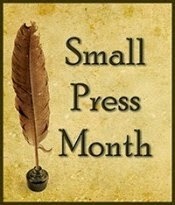 We've moved on to April (if not quite spring yet, here in the Midwest), so it's time to wrap up last month's focus on small press historical fiction.
We've moved on to April (if not quite spring yet, here in the Midwest), so it's time to wrap up last month's focus on small press historical fiction.Thanks to everyone for reading along and commenting, and I'd like to extend a special appreciation to the ten guest authors who took the time to contribute essays about their novels and research. It was a busy month, but a fun one for me.
Thanks also to all of the readers who left comments as part of my 8th anniversary giveaway; it was great to hear your thoughts, and I'll do my best to continue with the features you enjoy the most.
And now for some contest winners:
Copies of Brian Walter Budzynski's The Remark will be going out to:
Gabriele G.
Cheryl O.
Susan C.
And a small press novel of her choice (anything mentioned in a post in March) will be going to:
Erin H.
I'll be in touch this morning to get your mailing addresses. Congratulations, and hope you enjoy the books!
Back in February, I said I'd provide a Mr. Linky for other bloggers to link up their reviews of small press historical fiction, and since I neglected to do so earlier, you're welcome to include them in the form below. Links should lead directly to your review post and not to your blog's main page.
There's no time restriction for these links; if you've reviewed a historical novel from a small press at any point on your sites, it's fine to include them. This will give other readers the largest selection possible of small press reviews to browse. If nothing else, I'm including my own four March reviews here!
Published on April 02, 2014 06:00
March 31, 2014
History as seen by peasants and pagans, a guest essay by Kim Rendfeld
For the final post in this year's Small Press Month focus, Kim Rendfeld (who was interviewed here in September 2012) talks about the different perspectives offered by her two historical novels, both set in 8th-century Francia. ~
History as Seen by Peasants and Pagans By Kim Rendfeld
What would it be like if everything you believed literally went up in smoke? And what would it be like if one minute you were a freewoman and the next sold into slavery?
Those two questions arose in my mind during my research for my debut novel, The Cross and the Dragon (2012, Fireship Press), a tale of love amid the wars and blood feuds of Charlemagne’s reign. As I looked into the history of this era, two things caught my attention:
• In 772, Frankish King Charles destroyed the Irminsul, a pillar holy to the pagan Saxon peoples. The location and what the pillar was made of – or even if there was only one – are uncertain. Charles’s act was reminiscent of deeds by Saints Boniface and Willibrord.
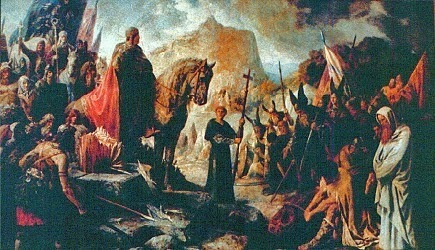 Charlemagne's destruction of the Irminsul, Hermann Wislicenus (ca 1880).
Charlemagne's destruction of the Irminsul, Hermann Wislicenus (ca 1880).
Source: Wikimedia Commons
• Slavery was alive and well in this era. War captives often ended up in servitude.
I had to let this information rest in the back of my mind while I wrote a novel from the perspective of Frankish Christian aristocrats who had their own difficulties to contend with. Novels by their very nature immerse readers in the world of the characters. For the story to feel real, readers must see events through people with their own virtues and flaws, beliefs and biases.
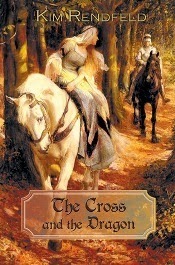 But that also means excluding other points of view. This causes a bit of tension for me. During my nearly two decades in journalism, I valued fairness and telling all sides of the story, especially from people not in power.
But that also means excluding other points of view. This causes a bit of tension for me. During my nearly two decades in journalism, I valued fairness and telling all sides of the story, especially from people not in power.
The pagan Continental Saxons fit the definition of underdog. They are history’s loser. After more than 30 years of war off and on and brutality on both sides, Charlemagne’s Franks subjugated them. In addition, the Church did everything it could to obliterate the religion, which it considered devil worship, and the Continental Saxons did not have a written language as we know it.
Even on the Frankish side, literacy was limited. The annals, letters, and other documents concern themselves mainly with the affairs of royalty and saints. Pagans are depicted as brutes, war captives are treated like war booty, and peasants are rarely mentioned at all.
That urge for fairness is one reason an imaginary Saxon peasant family sold into slavery insisted I tell their story as I was trying to figure out my second novel. Originally secondary characters, they hijacked my plot.
The result: The Ashes of Heaven’s Pillar (forthcoming 2014, Fireship Press), which depicts many of the same historical events as my debut but from the views of a pagan mother and her two children. My heroine, Leova, must grapple with why the gods let the Irminsul burn and how to protect her children when she’s lost everything – her husband, her home, her faith, even her freedom.
Here, historical fiction fills a gap. It might be the only way to see early medieval history through the eyes of pagans and peasants.
~
 A former journalist and current copy editor for a university marketing and communications office, Kim Rendfeld has a lifelong fascination with fairy tales and legends, which set her on her quest to write
The Cross and the Dragon
and its companion,
The Ashes of Heaven’s Pillar
.
A former journalist and current copy editor for a university marketing and communications office, Kim Rendfeld has a lifelong fascination with fairy tales and legends, which set her on her quest to write
The Cross and the Dragon
and its companion,
The Ashes of Heaven’s Pillar
.
For more about Kim, visit kimrendfeld.com or her blog, Outtakes of a Historical Novelist. If you’d like to receive an e-mail from Kim when The Ashes of Heaven’s Pillar is available, contact her at kim [at] kimrendfeld [dot] com.
History as Seen by Peasants and Pagans By Kim Rendfeld
What would it be like if everything you believed literally went up in smoke? And what would it be like if one minute you were a freewoman and the next sold into slavery?
Those two questions arose in my mind during my research for my debut novel, The Cross and the Dragon (2012, Fireship Press), a tale of love amid the wars and blood feuds of Charlemagne’s reign. As I looked into the history of this era, two things caught my attention:
• In 772, Frankish King Charles destroyed the Irminsul, a pillar holy to the pagan Saxon peoples. The location and what the pillar was made of – or even if there was only one – are uncertain. Charles’s act was reminiscent of deeds by Saints Boniface and Willibrord.
 Charlemagne's destruction of the Irminsul, Hermann Wislicenus (ca 1880).
Charlemagne's destruction of the Irminsul, Hermann Wislicenus (ca 1880).Source: Wikimedia Commons
• Slavery was alive and well in this era. War captives often ended up in servitude.
I had to let this information rest in the back of my mind while I wrote a novel from the perspective of Frankish Christian aristocrats who had their own difficulties to contend with. Novels by their very nature immerse readers in the world of the characters. For the story to feel real, readers must see events through people with their own virtues and flaws, beliefs and biases.
 But that also means excluding other points of view. This causes a bit of tension for me. During my nearly two decades in journalism, I valued fairness and telling all sides of the story, especially from people not in power.
But that also means excluding other points of view. This causes a bit of tension for me. During my nearly two decades in journalism, I valued fairness and telling all sides of the story, especially from people not in power. The pagan Continental Saxons fit the definition of underdog. They are history’s loser. After more than 30 years of war off and on and brutality on both sides, Charlemagne’s Franks subjugated them. In addition, the Church did everything it could to obliterate the religion, which it considered devil worship, and the Continental Saxons did not have a written language as we know it.
Even on the Frankish side, literacy was limited. The annals, letters, and other documents concern themselves mainly with the affairs of royalty and saints. Pagans are depicted as brutes, war captives are treated like war booty, and peasants are rarely mentioned at all.
That urge for fairness is one reason an imaginary Saxon peasant family sold into slavery insisted I tell their story as I was trying to figure out my second novel. Originally secondary characters, they hijacked my plot.
The result: The Ashes of Heaven’s Pillar (forthcoming 2014, Fireship Press), which depicts many of the same historical events as my debut but from the views of a pagan mother and her two children. My heroine, Leova, must grapple with why the gods let the Irminsul burn and how to protect her children when she’s lost everything – her husband, her home, her faith, even her freedom.
Here, historical fiction fills a gap. It might be the only way to see early medieval history through the eyes of pagans and peasants.
~
 A former journalist and current copy editor for a university marketing and communications office, Kim Rendfeld has a lifelong fascination with fairy tales and legends, which set her on her quest to write
The Cross and the Dragon
and its companion,
The Ashes of Heaven’s Pillar
.
A former journalist and current copy editor for a university marketing and communications office, Kim Rendfeld has a lifelong fascination with fairy tales and legends, which set her on her quest to write
The Cross and the Dragon
and its companion,
The Ashes of Heaven’s Pillar
.For more about Kim, visit kimrendfeld.com or her blog, Outtakes of a Historical Novelist. If you’d like to receive an e-mail from Kim when The Ashes of Heaven’s Pillar is available, contact her at kim [at] kimrendfeld [dot] com.
Published on March 31, 2014 05:30
March 28, 2014
Small press spotlight: new & upcoming historical novels from international publishers
And, for my final gallery of small press titles, here are a dozen new and forthcoming titles from small presses based outside the United States. Putting this list together was both fun and challenging, since I aimed to include a variety of countries, publisher-wise, as well as historical settings. And for American readers, many of these titles won't be as hard to obtain as you'd think: most have US distribution either in print or on Kindle.
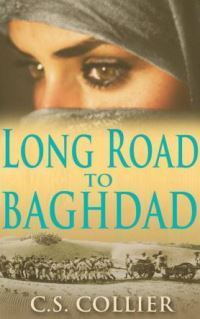
An epic, multicultural love story set in the Middle East in 1914, a new direction from a prolific Welsh novelist best known for her sagas. Accent Press (UK), August 2013.
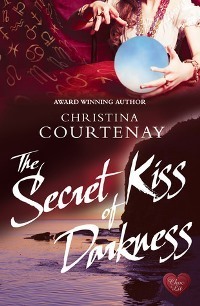
A new time-slip novel about a star-crossed 18th-century romance linked to the present day through a portrait, written by the recent winner of the Romantic Novelists' Association RoNA award in the historical category. Choc Lit (UK), February 2014.
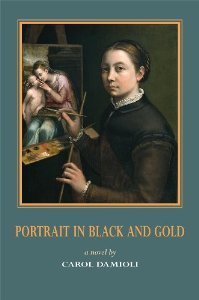
Biographical fiction about Sofonisba Anguissola, renowned Italian portrait painter at the court of Spain's Philip II. Inanna Publications (Canada), November 2013.
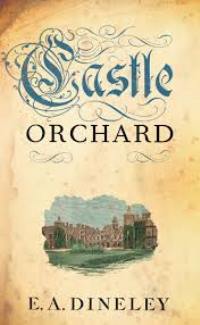
More lively social drama set in the countryside of Regency England; this is a sequel of sorts to The Death of Lyndon Wilder, which I reviewed last year. Corsair (UK), May 2014.
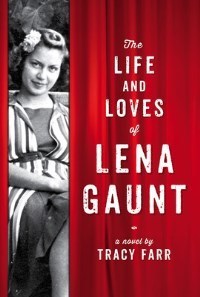
A fictional biography of an Australian woman ("musician, octagenarian, junkie") who becomes a modernist theremin player as her performing career takes her from 1920s Perth to locations around the world. Fremantle Press (Australia), 2013.
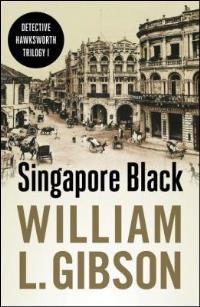
First in a series of historical thrillers set in Singapore in 1892 which follows a police detective as he tries to solve a visiting American's murder in Chinatown. Monsoon Books (Singapore), October 2013.

This YA novel set in the WWI years features a teenaged orphan with precognitive abilities who, after her parents' deaths on the Titanic, is sent to India, a land rife with unrest and conspiracies. Thistledown Press (Canada), March 2014.

Downton Abbey meets The Fugitive in post-WWI Western Australia: "An English heiress has just given birth and unleashed hell. Weakened and grieving, she realises her life is in danger, and flees into the desert with her Aboriginal maid. One of them is running from a murderer; the other is accused of murder." Sounds like a wild ride. Allen & Unwin (Australia), March 2014.
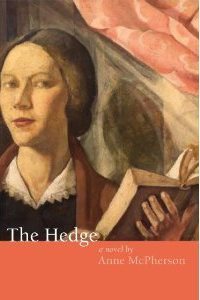
A historical novel set in 17th-century Hartford! For some reason, historicals set in my home state of Connecticut are exceedingly rare. Anne Yale Hopkins (a historical character) marries and hopes to settle happily into her new life only to have it turn out other than she envisioned. Inanna Publications (Canada), November 2013.
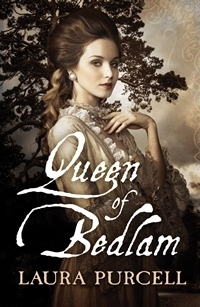
The plight of Queen Charlotte and her daughters, beset from all sides when her husband, England's King George III, goes mad. There are so few biographical novels about the Georgian kings and queens (aside from Jean Plaidy's, of course) that I'm eagerly awaiting this one; I'll be reviewing it later this year. (Edited to add: A previous version of this novel was titled God Save the King.) Myrmidon Books (UK), June 2014.
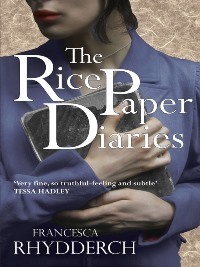
The stories of a Welsh couple, trapped in war-torn Hong Kong in the 1940s as the Japanese overtake the city, intertwine with those of their Chinese servant and their young daughter. Seren (Wales/UK), July 2013.
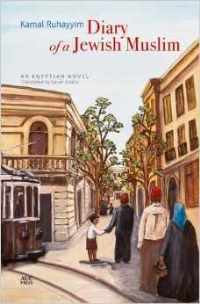
This literary work depicts the harmony between Muslims, Jews, and Christians that existed in old Cairo before the Arab-Israeli Wars, as seen through the eyes of a boy with a mixed religious background. American University in Cairo Press (Egypt), September 2014.

An epic, multicultural love story set in the Middle East in 1914, a new direction from a prolific Welsh novelist best known for her sagas. Accent Press (UK), August 2013.

A new time-slip novel about a star-crossed 18th-century romance linked to the present day through a portrait, written by the recent winner of the Romantic Novelists' Association RoNA award in the historical category. Choc Lit (UK), February 2014.

Biographical fiction about Sofonisba Anguissola, renowned Italian portrait painter at the court of Spain's Philip II. Inanna Publications (Canada), November 2013.

More lively social drama set in the countryside of Regency England; this is a sequel of sorts to The Death of Lyndon Wilder, which I reviewed last year. Corsair (UK), May 2014.

A fictional biography of an Australian woman ("musician, octagenarian, junkie") who becomes a modernist theremin player as her performing career takes her from 1920s Perth to locations around the world. Fremantle Press (Australia), 2013.

First in a series of historical thrillers set in Singapore in 1892 which follows a police detective as he tries to solve a visiting American's murder in Chinatown. Monsoon Books (Singapore), October 2013.

This YA novel set in the WWI years features a teenaged orphan with precognitive abilities who, after her parents' deaths on the Titanic, is sent to India, a land rife with unrest and conspiracies. Thistledown Press (Canada), March 2014.

Downton Abbey meets The Fugitive in post-WWI Western Australia: "An English heiress has just given birth and unleashed hell. Weakened and grieving, she realises her life is in danger, and flees into the desert with her Aboriginal maid. One of them is running from a murderer; the other is accused of murder." Sounds like a wild ride. Allen & Unwin (Australia), March 2014.

A historical novel set in 17th-century Hartford! For some reason, historicals set in my home state of Connecticut are exceedingly rare. Anne Yale Hopkins (a historical character) marries and hopes to settle happily into her new life only to have it turn out other than she envisioned. Inanna Publications (Canada), November 2013.

The plight of Queen Charlotte and her daughters, beset from all sides when her husband, England's King George III, goes mad. There are so few biographical novels about the Georgian kings and queens (aside from Jean Plaidy's, of course) that I'm eagerly awaiting this one; I'll be reviewing it later this year. (Edited to add: A previous version of this novel was titled God Save the King.) Myrmidon Books (UK), June 2014.

The stories of a Welsh couple, trapped in war-torn Hong Kong in the 1940s as the Japanese overtake the city, intertwine with those of their Chinese servant and their young daughter. Seren (Wales/UK), July 2013.

This literary work depicts the harmony between Muslims, Jews, and Christians that existed in old Cairo before the Arab-Israeli Wars, as seen through the eyes of a boy with a mixed religious background. American University in Cairo Press (Egypt), September 2014.
Published on March 28, 2014 10:00



